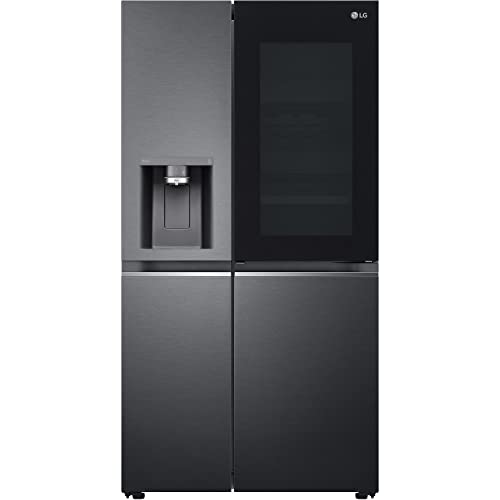Where to Buy a Fridge: A Comprehensive Guide
Purchasing a refrigerator is a considerable choice due to its function as one of the most essential home appliances in the home. Fridges can be found in various sizes, styles, and cost varieties, making the purchasing procedure potentially frustrating. Nevertheless, comprehending where and how to shop for a fridge can streamline this process. This short article aims to check out different avenues for purchasing a refrigerator, key considerations, and frequently asked concerns to help customers make notified options.
Where to Buy a Fridge
When it comes to searching for a refrigerator, consumers have a number of alternatives. Each opportunity uses its own benefits and drawbacks, and understanding these can help purchasers pick the very best fit for their requirements.
1. Brick-and-Mortar Retailers
Standard home appliance stores and big-box sellers continue to be popular locations for refrigerator shopping. These locations consist of:
- Home enhancement shops (e.g., Home Depot, Lowe's)
- Electronics shops (e.g., Best Buy)
- Specialty device merchants
Pros:
- Hands-On Experience: Customers can see, touch, and check the fridge.
- Immediate Availability: Many stores use same-day delivery services.
- Sales Assistance: Trained sales personnel can provide skilled suggestions.
Cons:
- Higher Prices: Retail prices can be steeper compared to online options.
- Restricted Inventory: Smaller shops may not bring comprehensive selections.
2. Online Retailers
The internet has reinvented the method people shop, consisting of for appliances. Popular online options consist of:
- E-commerce giants (e.g., Amazon, Walmart)
- Manufacturer websites (e.g., Samsung, LG)
Pros:
- Wider Selection: Online stores often have a more comprehensive stock compared to brick-and-mortar areas.
- Convenience: Shopping can be done from the convenience of home at any time.
- Cost Comparisons: Easily compare rates throughout various platforms.
Cons:
- Shipping Costs: Delivery charges can include to the general price.
- No Immediate Gratification: Customers have to wait on shipment.
- Lack of Personal Interaction: No opportunity to ask direct concerns.
3. Warehouse Clubs
Membership-based wholesale retailers, like Costco and Sam's Club, provide fridges at competitive prices.
Pros:
- Bulk Discounts: Membership frequently permits cost savings on bigger purchases.
- High quality: These shops maintain high requirements for the brands they carry.
Cons:
- Membership Fee: A membership is needed to shop there.
- Minimal Choices: The inventory may not consist of all brand names or models.
4. Local Classifieds and Marketplaces
Platforms like Craigslist, Facebook Marketplace, and OfferUp enable individuals to buy used or brand-new fridges from regional sellers.
Pros:
- Lower Prices: Often less expensive than retail, specifically for utilized products.
- Local Transactions: Easy to view and select up home appliances.
Cons:
- Risk of Quality Issues: Used designs can come with covert problems.
- No Return Policy: Typically, sales are final, with no service warranty or guarantee.
Table of Fridge Types and Features
| Fridge Type | Best For | Key Features |
|---|---|---|
| Top Freezer | Budget-conscious buyers | Classic design, budget friendly |
| Bottom Freezer | Easy access to fresh food | Ergonomic design |
| Side-by-Side | Families with minimal area | Sufficient storage and ease of access |
| French Door | Premium cooks | Style, space, advanced functions |
| Compact | Small areas like apartments | Space-saving style |
Secret Considerations When Buying a Fridge
As customers ponder where to buy a fridge, numerous considerations can direct their decision-making procedure:
Size and Fitting
- Procedure the Space: Ensure the fridge fits within designated kitchen area space.
- Door Swing: Account for door clearance and swing radius.
Energy Efficiency
- Try To Find Energy Star Ratings: This makes sure lower electrical energy costs.
- Comprehend the Long-Term Savings: Energy-efficient models might have higher in advance expenses but lower operating expenses.
Design and style
- Choose a Style: Select appropriate styles such as standard or contemporary according to your kitchen aesthetic appeals.
- End up Options: Stainless steel, black, and white finishes can affect the overall look.
Price Considerations
- Set a Budget: Determine a spending range before shopping.
- See for Discounts: Seasonal sales durations frequently provide savings.
Guarantee and Support
- Manufacturer's Warranty: Understand what is covered and for how long.
- Customer support: Check ratings for manufacturer support services.
Regularly Asked Questions (FAQs)
Q: What is the most energy-efficient refrigerator brand name?
A: Brands such as Energy Star, LG, and Samsung are widely acknowledged for their energy effectiveness.
Q: Is it worth buying an utilized refrigerator?
A: It can be, particularly if you are on a tight budget. Nevertheless, ensure you examine the device completely for any existing concerns.
Q: What is the typical life expectancy of a refrigerator?
A: Most fridges last between 10 to 20 years, depending upon usage and upkeep.
Q: Should I buy a refrigerator online or in-store?
A: This depends upon individual choice. Online shopping provides benefit and selection, while in-store supplies hands-on experience and instant purchasing choices.
Q: What features should I look for in a refrigerator?
A: Key functions to think about include adjustable shelving, ice and water dispensers, noise level, and wise technology alternatives.
Shopping for a refrigerator doesn't need to be an overwhelming job. With different purchasing alternatives-- from brick-and-mortar shops to online merchants and categorized advertisements-- consumers can find the best refrigerator that fits their requirements. By thinking about Fridges And Freezers as size, energy efficiency, and design, prospective purchasers are better geared up to navigate the getting process. Eventually, whether purchasing new or used, the objective remains the same: to enhance the kitchen area experience with a trusted device that meets both practical requirements and personal choices.

